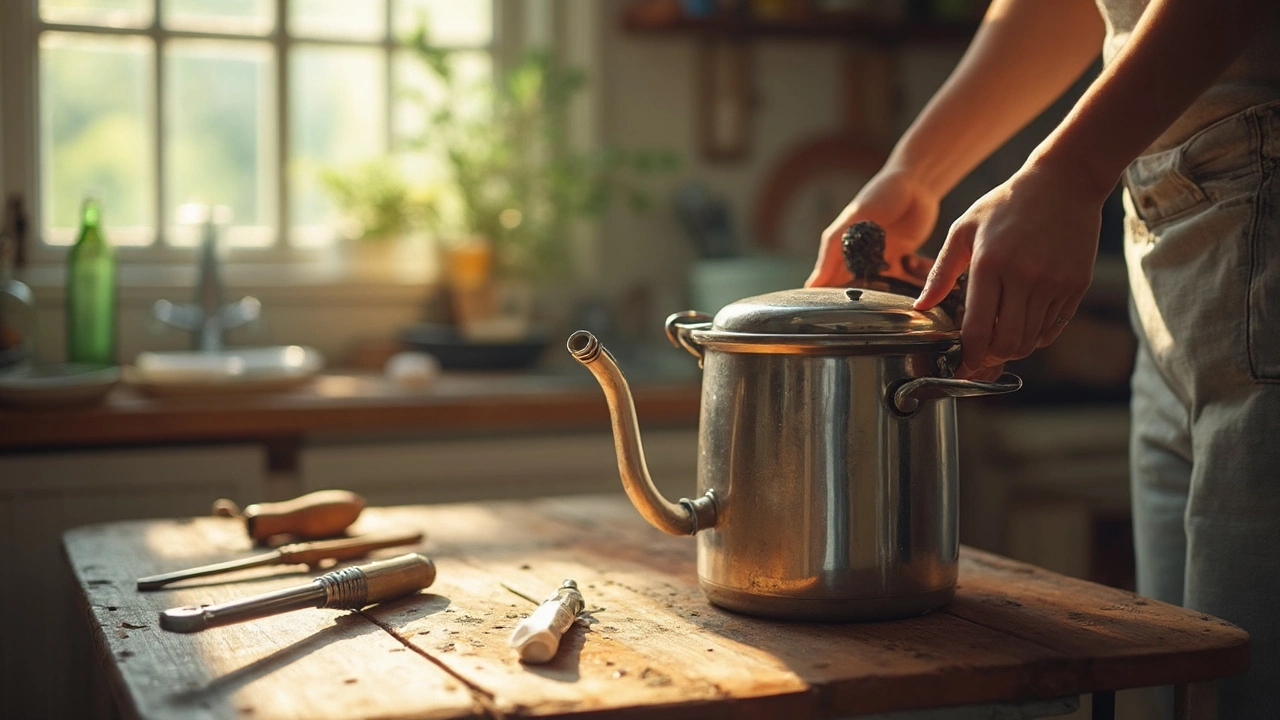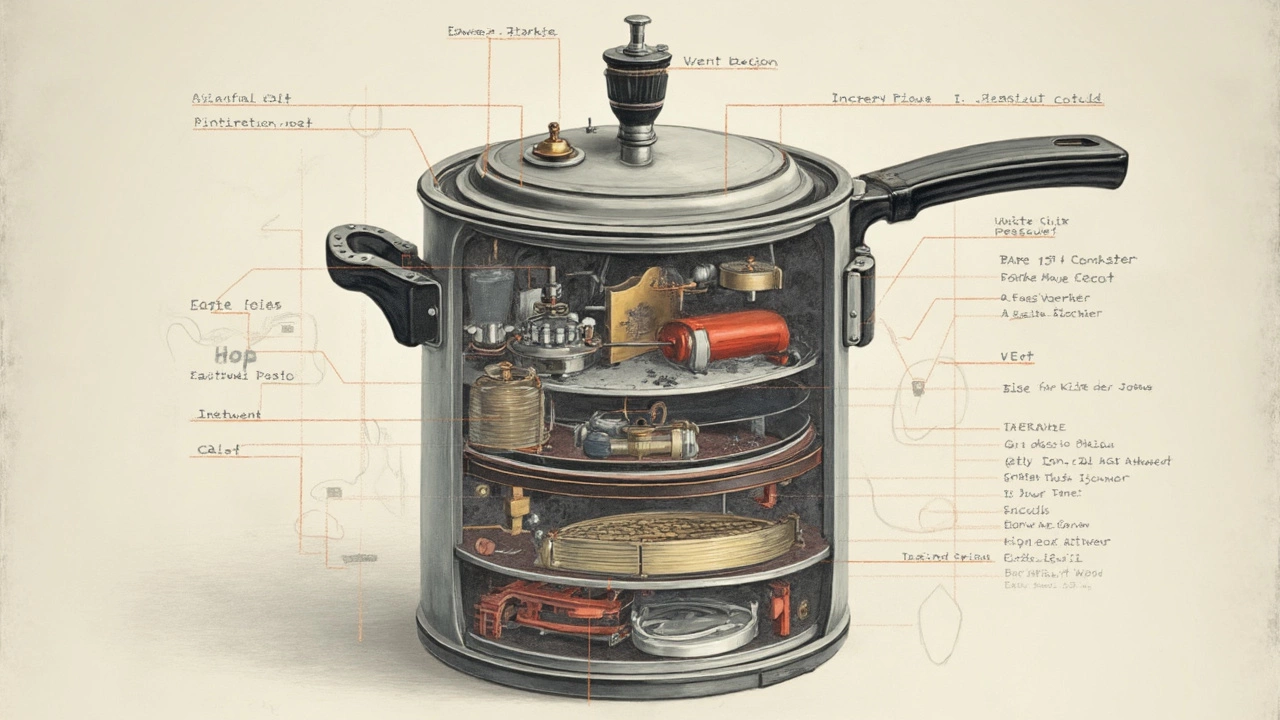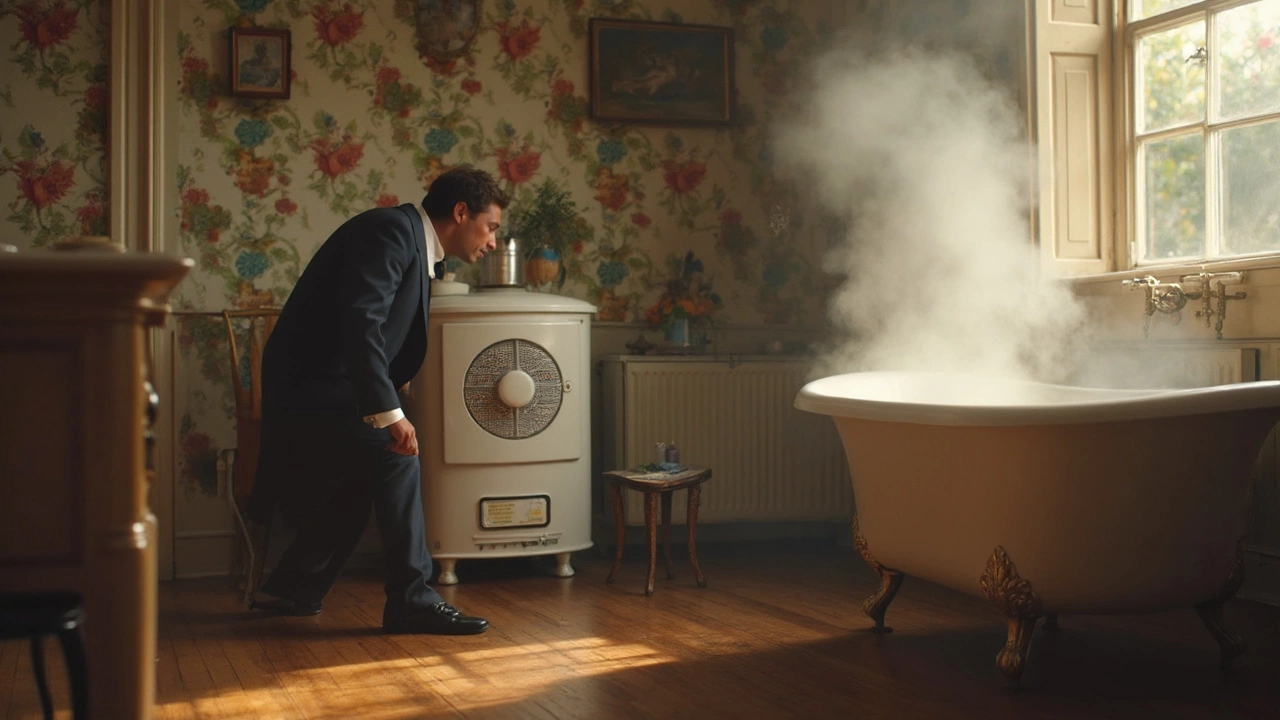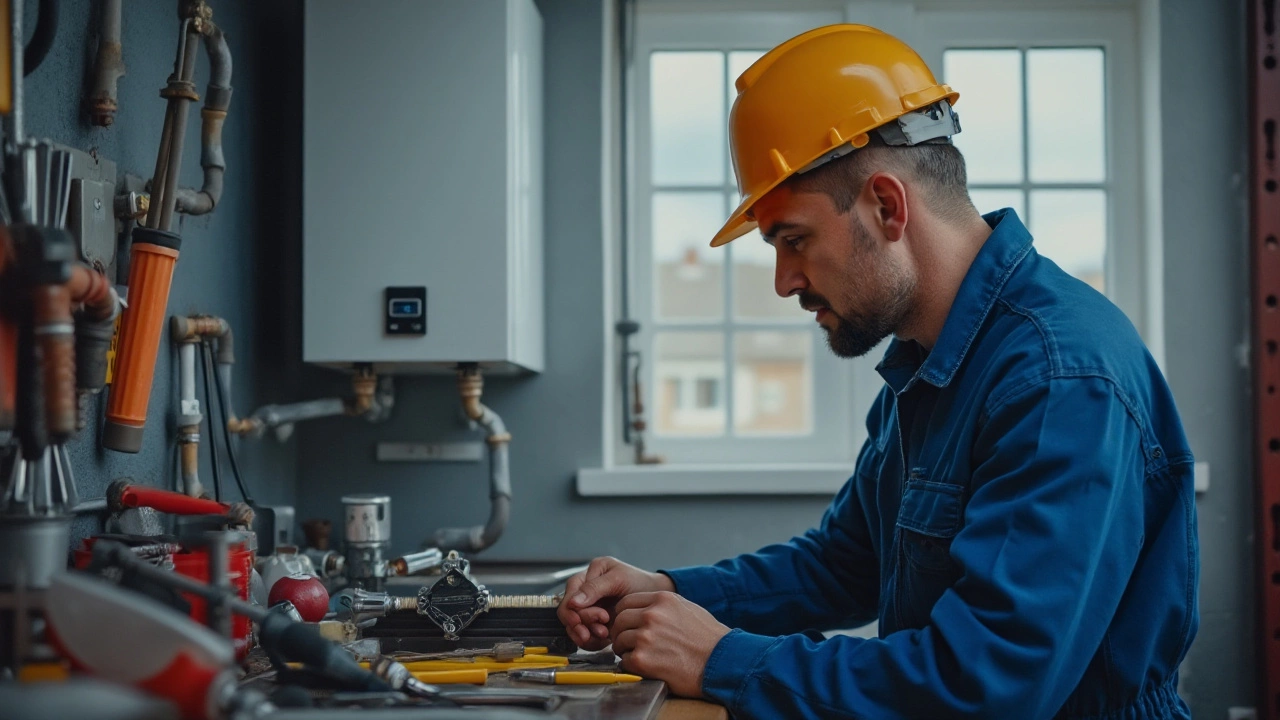
- 22 Mar 2025
- Gideon Thornton
- 0
Pressure cookers are fantastic devices, saving you both time and energy in the kitchen. But what happens when things don't work like they should? First, don't panic. A lot of the issues that pop up with pressure cookers are actually pretty fixable without needing to buy a new one.
Before grabbing a screwdriver, it’s good to know your pressure cooker inside and out. Most of them have similar parts: a lid, a seal, a pressure valve, and sometimes a safety valve. These components help the cooker to maintain pressure, and knowing which part has the issue is the first step towards a fix.
One nifty fact is that the seals or gaskets are actually the most common parts to wear out. They bear the brunt of the work, enduring all the heat and pressure. If your cooker isn’t sealing properly, chances are a new gasket might do the trick.
Still unsure? Sometimes just cleaning or properly aligning the lid or valves can solve your problem. More serious issues like a damaged valve might need professional help, but for many of the simpler issues, a YouTube video or user manual could be your best friend.
- Understanding Pressure Cookers
- Common Problems and DIY Fixes
- Parts You Can Replace Yourself
- When to Call a Professional
Understanding Pressure Cookers
Pressure cookers have been a staple in many kitchens for decades, loved for their ability to cook food quickly and efficiently. At the heart of it, they're simple yet effective devices that use steam pressure to raise the boiling point of water, speeding up the cooking process. So, how do they really work?
Basic Components
Your typical pressure cooker consists of a pot, a lid with a sealing ring, a valve for controlling pressure, and sometimes a safety valve. These parts work together to trap steam and build up pressure within the pot, which cooks food faster.
The seal or gasket plays a crucial role by keeping steam from escaping, and if it goes bad, you're likely going to face some issues. Many times, just replacing this seal is all it takes to get your cooker back to work.
Common Uses
Pressure cookers are famous for cooking tougher cuts of meat, grains, and beans in a fraction of the time it would take using conventional methods. They're also great for making broths, soups, and even desserts!
Interesting Fact
Did you know that the higher pressure created inside the cooker actually allows water to boil at around 250 degrees Fahrenheit, instead of the 212 degrees we're used to? This extra heat is why cooking times can dramatically drop.
Understanding Common Issues
If your pressure cooker isn’t functioning properly, it could be due to a faulty valve, a worn-out gasket, or simply food residue blocking the parts. Before jumping to conclusions that require a professional, a thorough cleaning might just do the trick. Always ensure the safety valve is operational to prevent any potential hazards.
Being familiar with these key components can not only help with fixing problems but also prevent them by allowing you to take better care of your cooker. Regular maintenance like checking the state of the gasket and cleaning the valves can extend the life of your handy kitchen assistant.
Common Problems and DIY Fixes
When your pressure cooker starts acting up, it can throw off your dinner plans. The good news is that lots of these problems are totally fixable with a little know-how and elbow grease. Here's a breakdown of some common problems and how you might tackle them.
1. Leaky Lid
A leaky lid is probably the most common issue. If you notice a constant hiss of steam escaping, your cooker won't build the right pressure. Check the rubber gasket first—it might just be dirty or misaligned.
- Remove the gasket and give it a good wash with soap and warm water.
- Check it for any cracks or hard bits—those are signs you need a new one.
- Once it's clean, pop it back in, making sure it sits snugly against the rim.
2. Pressure Won’t Build
If your cooker struggles to reach full pressure, it might be a blocked pressure valve. This part tends to get clogged with food particles, especially if something bubbles over during cooking.
- Turn off the cooker and let it cool down safely.
- Remove the pressure valve—usually, it just twists off.
- Clean it thoroughly under running water and ensure the path is clear.
- Reattach it securely, and you should be good to go.
3. Strange Noises
Popping noises or excessive hissing might scare the kids, but they're often signs of a minor issue. It could be the gasket not being set correctly or the valve being a bit loose.
- Check the tightness of the gasket and reseat it if necessary.
- Make sure the lid is securely locked into place.
4. Safety Concerns
If you ever doubt whether something is safe to tackle yourself, don't risk it. For things like a safety valve malfunction, especially on older models, it's best to consult with a professional. Your local repair shop might charge a small fee, but it's worth the peace of mind.
Solving these pressure cooker problems can extend the life of your trusty kitchen sidekick, saving you tons of money and hassle in the long run. And let’s face it, nothing beats the satisfaction of a DIY fix that has you back in dinner mode in no time. Just remember always to prioritize safety over anything else.

Parts You Can Replace Yourself
When it comes to fixing your trusty pressure cooker, there are some parts you can easily replace on your own without breaking a sweat. Tackling these repairs yourself not only saves money but also helps you learn more about how your kitchen gadget works.
Gasket (Sealing Ring)
The gasket, or sealing ring, is one of the most common culprits when things go awry. Over time, it can wear out or become misaligned, leading to leaks. To fix this, simply find a replacement specified for your cooker's model. Make sure to soak the new gasket in warm water before installing it to ensure flexibility.
Pressure Regulator
The pressure regulator is responsible for maintaining the right pressure inside. If you hear hissing sounds or notice fluctuating pressure during cooking, it might be time for a new regulator. This part usually snaps or screws easily into place.
Safety Valve
Safety is key! The safety valve is designed to release pressure if things get too intense. If it's faulty, your cooker might not hold pressure correctly. Swapping this out for a new one is typically straightforward, just be sure to buy a valve that's compatible with your model.
Other Components
Depending on your pressure cooker model, there might be other small parts you can replace, like the handle or lid lock. Always check the manufacturer’s guide for parts availability and compatibility.
Here’s a quick reference on the parts you can likely handle without calling in the pros:
- Gasket
- Pressure Regulator
- Safety Valve
- Handles
- Lid Lock
Always remember to consult the user manual or watch some instructional videos if you’re unsure. With a bit of courage and some DIY spirit, you’ll have your cooker back in action in no time!
When to Call a Professional
So, you’ve tried all the DIY fixes but your pressure cooker is still not working right. Before you toss it out or struggle with it any longer, it might be time to call in the pros. But how do you know when it’s the right move?
Complex Electrical Issues
If your pressure cooker is electric and not responding at all—like it won’t turn on or gets stuck on one setting—you're probably dealing with an electrical problem. Tampering with electrical issues without proper training can lead to more damage or even safety hazards, so it's best to let an expert handle those.
Damaged Safety Valves
The safety valve is there to prevent the cooker from building up too much pressure. If it’s broken or damaged, it’s crucial to get a professional’s help. Operating a cooker with a faulty safety valve can be very dangerous, as it risks explosion.
Structural Damage
Cracks or major dents in the body of your cooker aren’t just aesthetic issues—they can affect the cooker’s ability to regulate pressure and heat evenly. While small dents might not be a big deal, anything more significant should be looked at by someone who knows what they’re doing.
Cost-Effectiveness
Here’s a tip: if repairs cost more than half of what it would to buy a new cooker, it might be worth it to get a new one. However, if your model is expensive or hard to find, investing in professional repair could extend its life significantly.
| Problem Type | DIY or Professional? |
|---|---|
| Seal or Gasket | DIY |
| Electrical Faults | Professional |
| Safety Valve | Professional |
| Minor Scratches | DIY |
| Major Dents or Cracks | Professional |
Remember, playing it safe with repairs not only saves you money in the long run but also keeps your kitchen a safe place. So, when in doubt, don’t hesitate to call a professional.



